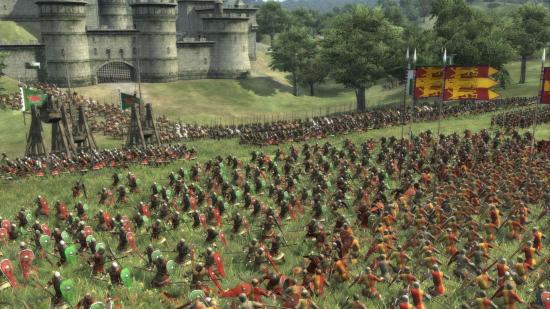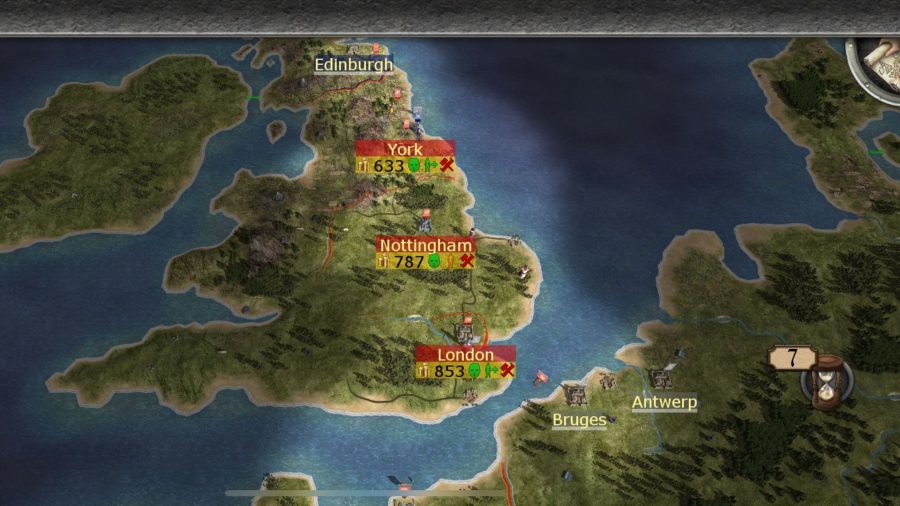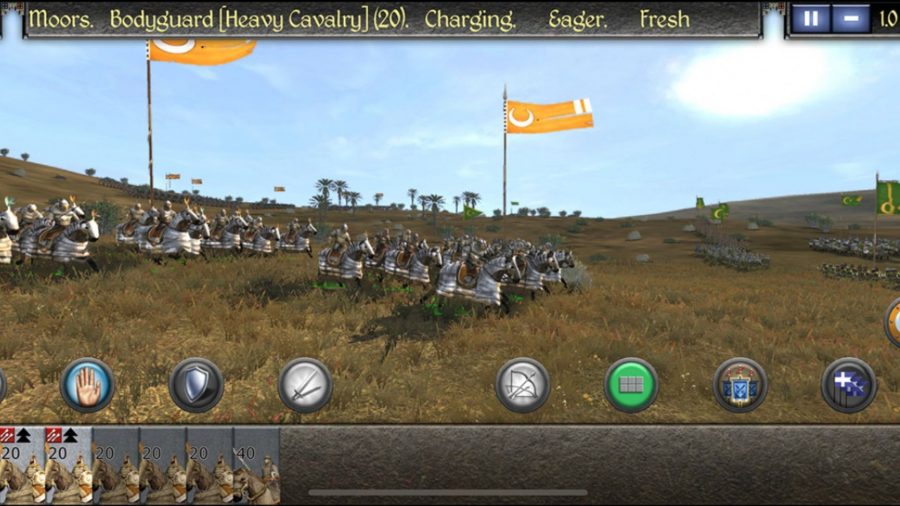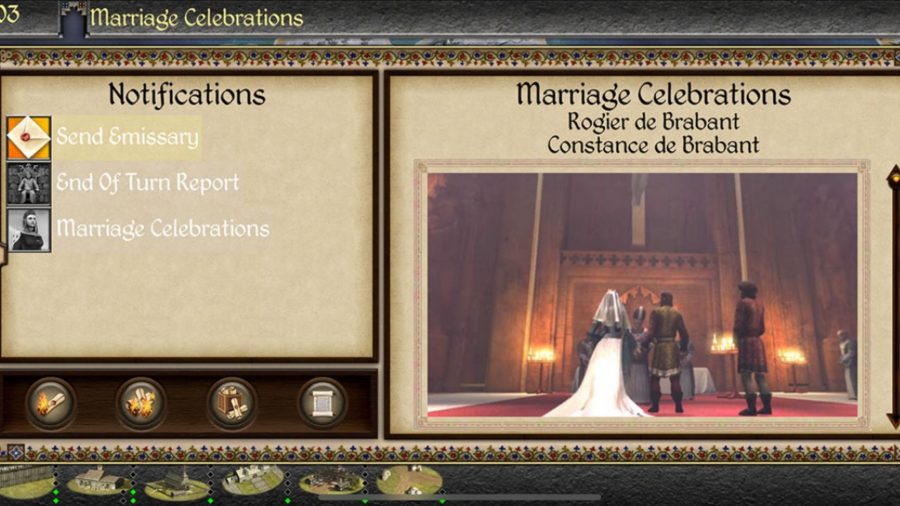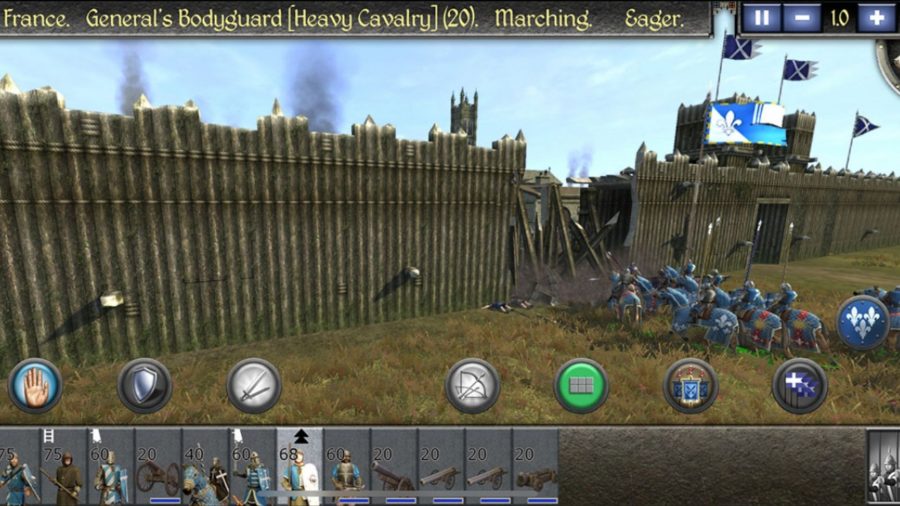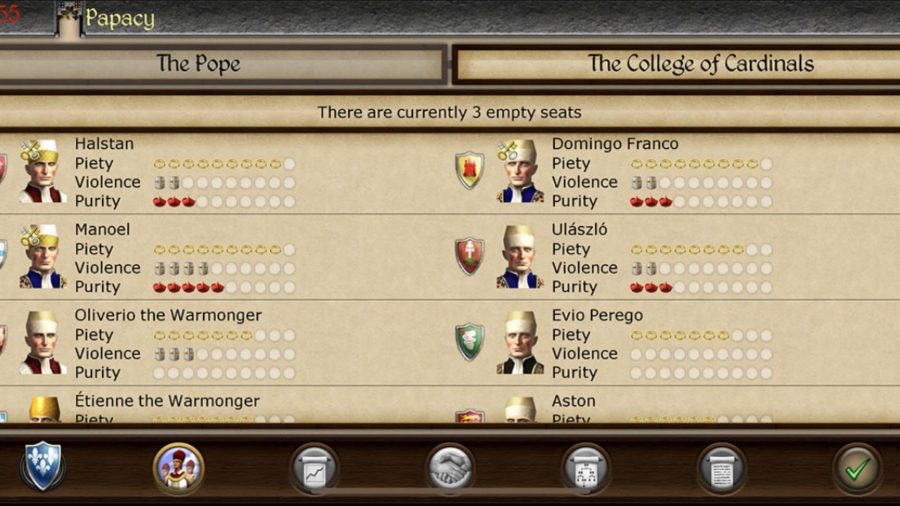Our Verdict
Total War: Medieval 2 holds up, there's no doubt about it. It's still one of the best strategy titles ever made. But the concessions to fit this fiddly thing onto a small screen are clear, and anyone who's thinking of jumping in needs to ask themselves whether they just want to play the game again, or if they actually need it on their mobile phone. If it's the latter, then go for it. It's a good enough port.
Total War: Medieval 2 came out in 2006. I was eight years old. My parents ran their own business at the time, and my sister and I would use their computers to play games. We had them both set up right next to each other. I remember us playing a lot of The Sims together, talking about each other’s design choices. I remember playing Lemmings a lot too. But most of all, I remember playing Total War games.
I start like this because, well, of course, I love this game. It’s second only to Rome: Total War (the biggest influence on me choosing to do a degree in Classics, probably). I remember the famous quotes on the loading screens. I remember every line of dialogue said by your army, a general before a battle, or the silly accent that the French diplomats have. It’s mixed into the rivulets of my being. So I love it.
But, as any grand strategy fan knows, they can be a bit fiddly. Whether you’re playing a Total War game or Civilization, it’s always best played on a computer. Or at least, that was the case. Crusader Kings III, a new all-timer in the genre, just made quite a successful transfer over to consoles. And Civilization VI has lived on console and mobile very successfully for a while now. Heck, I have loads of hours in the mobile version. It’s great!
So, what I’m getting at, albeit slowly, is that big fiddly strategy titles don’t need to be stuck on PC. But they do need to be transferred to touch screen devices quite carefully. I love the mobile port of Rome: Total War that Feral Interactive did a few years back, mainly because it’s one of the best games ever made, but it wasn’t as slick as I would like. That’s because, unlike almost every other game in the genre, Total War games have a battle system that requires quite a bit of real-time strategy.
Total War: Medieval 2 presents you with a map, as you’d expect, and shows the areas you control. If you choose England as your starting faction, then you have control over London, Nottingham, and Caen. In this overworld map, you control your finances, diplomacy, barracks, and cities. Build new buildings for better defence or higher income, train some soldiers for an upcoming war, and try your best to stay on everybody’s good side.
But, eventually, it’s time to fight. It doesn’t take long, to be honest. The first mission is to take a nearby, rebel-controlled city – York, in the case of England. That’s when you get down to business, zooming into a small map, with the city walls in the distance. Here, you have to position your troops for battle, and then direct their movement. Use pincer movements or flanking to get the best chance at victory, destroy the walls or bring ladders to help with the siege, and hopefully you win.
It all looks really good throughout. The overworld map is crisp, and moving around it is quick and responsive. In battles, zooming in to see your soldiers slashing away is as thrilling as it ever was. I’m surprised that the game holds up so well, visually. It did make my iPhone 11 get very hot, mind you, and suck away the battery, but that’s to be expected with big games like this.
From there, these various mechanics – both overworld diplomacy and conquest, and large-scale battles – are your method for conquering the world. Various events can take place, and certain factions have different goals in order for the conquest to be complete. As England, for example, you have to control Jerusalem, along with a set number of other settlements. The thrill of painting the whole map your faction’s colour is still there, even on the small screen.
There have been some UI tweaks for Medieval 2 that make it a lot slicker than you’d imagine. While it can still be finicky while trying to pull off a quick manoeuvre at a crunch point mid-battle, the experience is smooth for the most part. The first battle I played, taking the city of York, gave me the same thrill the original game did. It can be nail-biting stuff, and it’s been translated well enough.
On the overworld map, everything is much better than the Rome mobile port. It’s easier to manage notifications and settlements. Micromanaging is reduced with a new auto-management system for your militia only. Pretty much every issue I have with the previous port has been improved. There’s still a lot of information to fit on a tiny screen, but it’s definitely more legible.
There are some nice quality of life enhancements, too. Once you’ve got a game save, if you quit out and come back, rather than going through the menus again, a pop-up lets you go straight back into the game. That’s ace. I know it’s to be expected with mobile games, but it’s not with ports of 20-year-old strategy titles. So, yeah, nice one.
The main issue with Medieval 2 on a mobile phone is the hardware. I’m playing on an iPhone 11, and the screen is just a bit too small for me to feel comfortable. Dragging a path for units always feels inaccurate, as my thumb is in the way of the screen. Navigating menus can also be tricky, and I often hit buttons I don’t want to.
There are, of course, inevitable drawbacks to porting a game like this to a phone, and who am I to say if there’s a better way to do it? Either way, it’s not perfect. And that’s the main discussion for anyone who wants this game. Did you play it next to your sister when you were eight years old? And do you just want to play it again, or do you specifically want to play it on your phone?
When I was at university, I worked in the student union merchandise shop. This job was wallpaper-dull. Like most university students, I didn’t go to class much, but when I did, I made sure to have my computer and a strategy game to play for the bone-dry lecture about St. Agustine’s Confessions or whatever. I mean, I loved my degree, but I didn’t love St. Augustine, lemme tell ya.
So, I had two very boring things to do in my life: work and lectures. One of them I could have a computer in front of me, one of them I couldn’t. But I could have a phone out, discreetly, when a computer was off the table. So I bought Civilization VI on my iPhone (my third purchase of that game). It’s the worst way to play that game, but I played it for dozens if not more than a hundred hours just because it fit exactly what I needed. If I was in a Total War phase, maybe it would have been that Rome: Total War port.
So, what is there to say? If the above scenario or a similar scenario applies to you, then yes, jump in on this. It’s the best way to play the game on your phone, but it’s the worst way to play the game. If you have an iPad I’m certain the experience would be better. But then, at that point, why not just use a laptop? See, it’s all quite hard to reconcile. This is an exceptionally good strategy game, so there’s no sense in giving it a low score. You just have to decide if you can accept the concessions made to get it onto a mobile phone. Can you?
